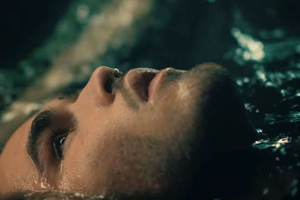Interview with cinematographer Tristan Chenais about his work on the music video for "New Start"
What was the origin of this video ?
Tristan Chenais : Richard Hall and I have known each other since we were students. He has become a friend and I love the crazy ideas that we come up with for each one of our projects. As we all know, music video and advert shoots are often considered to be technical and artistic laboratories. We often work in that direction, starting with a crazy idea and gradually adapting it to the film, sometimes heading towards surrealism. On this film, for example, we were lucky to find ourselves working in a simple way, as though we were amongst friends. Because the starting budget was really small (around 10,000 Euros), and we were working in a well-established production studio, we were completely free once the concept was approved !
Moreover, since Richard has experience as a production assistant, he is very skilled at putting together artistic dossiers for established directors. Now he is a master of that important aspect of preproduction work, this allows us to feel at ease both in visual terms and in our relations with the producer or the record label.
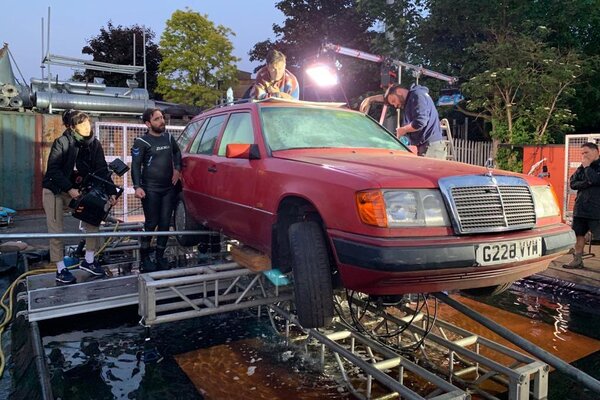
Any references to cite ?
TC : For me, a shot from Xavier Dolan’s film Lawrence, Anyways, at the start of the film. You see the main character seated in his car, in a scene shot in 8mm, with a very central composition. This simplicity and lack of artifice seemed perfectly in adequation with the idea that we had of the concept, namely time being frozen inside of a car as it plunges into the water after an accident.
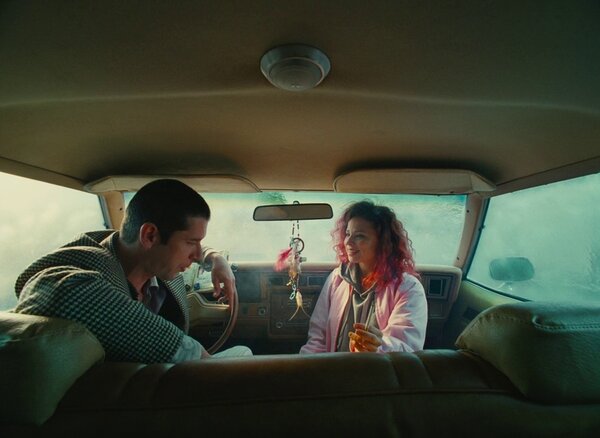
Quickly, we had to conclude that the visual layer of the accident would be out of our budget. We got around that by bringing the concept closer to a sort of intellectual, mental crash, which is limited to the inside of the car. Another example is that in the original script, the artist was supposed to be behind the steering wheel, but we had to adapt to space constraints and in order to have enough room for the camera, we put the artist in the passenger seat. In the end, we have something much less realistic than what had been originally planned, and I find that the constraints that pushed us to make those choices were at bottom quite liberating…
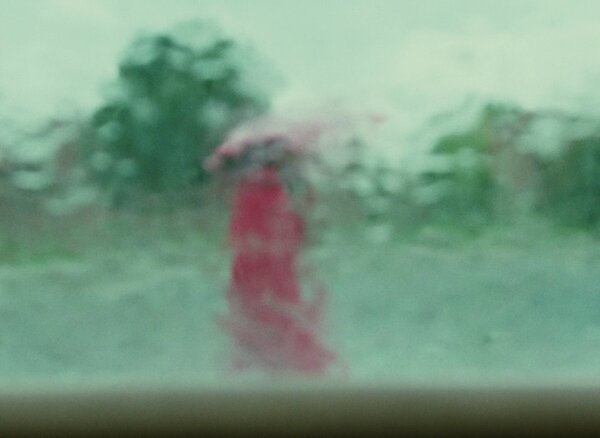
How did you set up the car full of water ?
TC : One of the keys to the success of our shoot was our excellent relationship with Artem. Artem is a British company that manufactures not only smoke machines that have a great reputation in the movie industry, but also a wide variety of customized equipment or special-effects machinery for sets. On the condition that we shoot in the parking lot in order to avoid travel and in order to save a lot of money, we were totally able to benefit from their expertise. They waterproofed the car, filled it with water (1.5 metric tonnes !), and managed the mechanical aspect, which involved placing the car on hydraulic cylinders in order to be able to create the movements inside the car as the story unfolds. It was a real technical and mechanical engineering challenge. The clip was shot in only one day – outdoors – during the month of March : we had to also manage the water temperature so that the artist and I could stand the 8 hours of shooting in the water. The water started off cool so that we wouldn’t get sleepy and got warmer throughout the day.
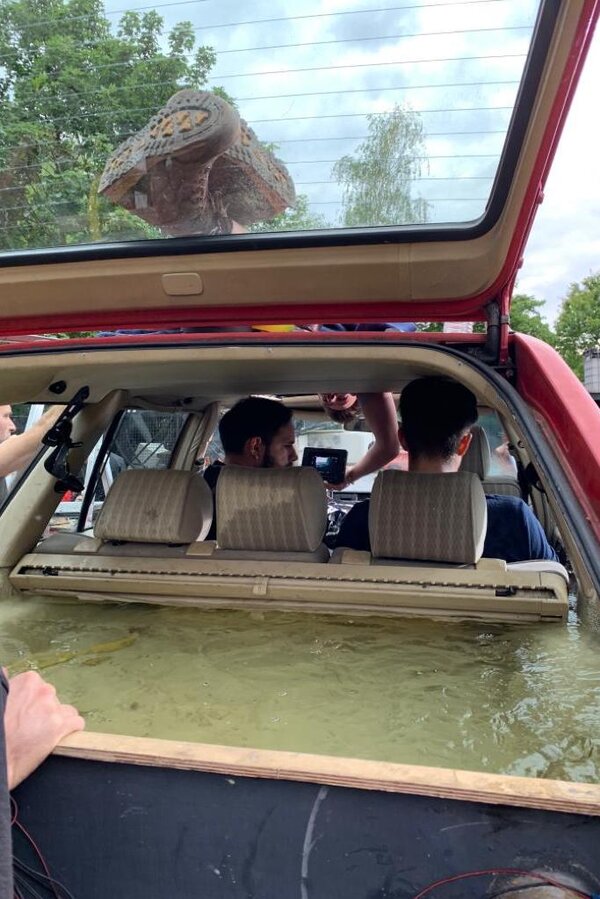
How did you choose the car ?
TC : Because we wanted the visuals to have a 90s feel, referencing the Dolan film, the Mercedes was chosen because it had a spacious interior. It was the most spacious car on the market without resorting to a minivan which would have felt too modern and which would have lacked patina. We also really needed a very robust chassis and mechanisms to be able to withstand the weight of the water and the movements caused by the hydraulic cylinders. Anecdotally, our hydraulic cylinders failed during the last third of the day, which caused the car to suddenly buck and created a much stronger wave inside than had been planned for. We were shooting at that time and we even kept that take in the final cut ! Happily, there was no damage or injuries, but I’ll admit that for the actor and myself, the incident gave us an adrenaline rush, and picked us up for the rest of the day which was beginning to feel tiresome !
de journée qui commençait à sombrer dans la torpeur !

What lenses did you choose ?
TC : I opted for two different configurations. For all outdoor shots that could be considered portraits, and for all water textures (like the opening shots), I used the new Zeiss Supreme series, which was designed to cover the very large full frame sensor on the Alexa LF. Used here with an Alexa Mini in 4/3 open gate, we only used the optical centre of the lenses and I think we got a very straight image with very little vignetting. A very rigorous image, a bit in the style of Jeff Wall.
For the rest of it, meaning everything in the car and everything underwater, I used a simple 14mm Master Prime, which allowed me to integrate the lengthening of the focal length due to diffraction with the water. All of the car scenes were shot with a splash bag, letting the image live with each successive take – in chronological order – as the water splashes the glass or steam forms on the car windows or on the splash bag’s porthole. It is almost as much a portrait of the water and the steam as it is of the artist.
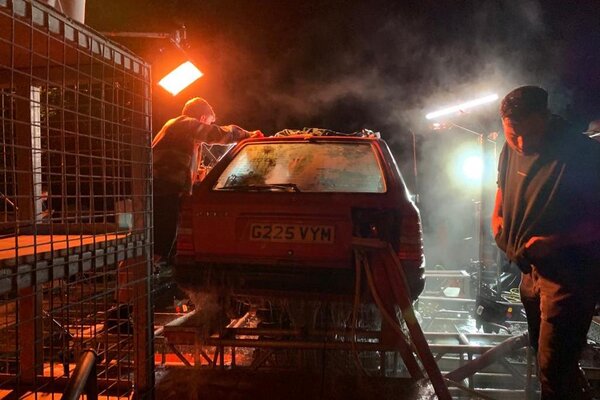
What about lighting ?
TC : For the lighting, I opted for something very simple, meaning I tried to use daylight at the start because we were shooting out of doors on that parking lot. In order to go gradually towards nighttime, playing with either the helicopter effect built above the car roof (to simulate travel but without much realism) or Astera LED tubes to generate much more contrasted light that veers into red or sodium at the end of the video. I found those colours very warm, perfect for creating a counterpoint to the green and cyan generated by the water, colours which were much more present at the start of the song. At first, I even intended to use the Astera tubes, which are autonomous (integrated battery), underwater, but it wasn’t possible.
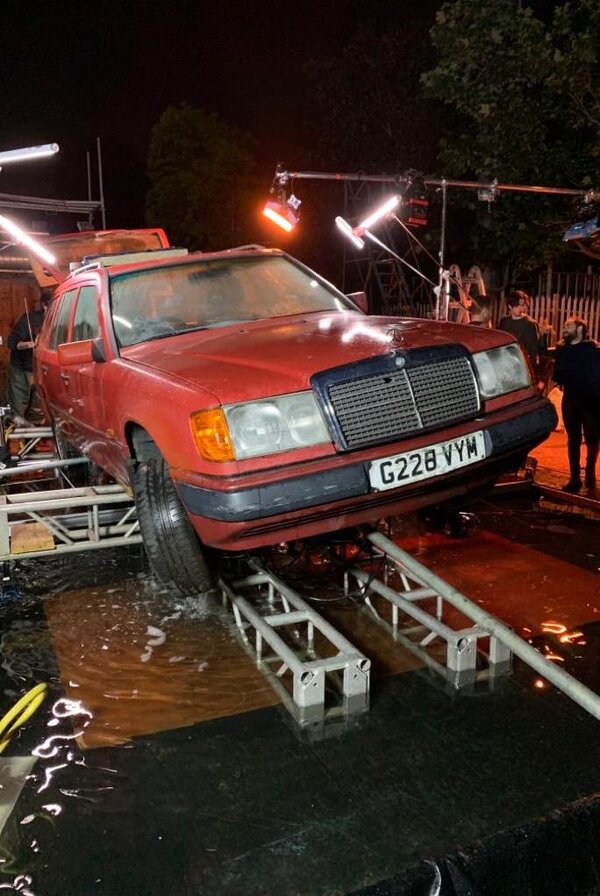
Any slow-motion ?
TC : We had to shoot in slow-motion at 200 fps on the Mini but never at phenomenal cadences as is often the case in adverts when you’re filming liquids. In fact, I don’t like very high speed very much and I quickly tire of that type of images. On "New Start" we also closed the aperture a bit to reduce the blur motion, but it was mainly with the help of flashes of red light from the Asteras that we were able to recreate the flow effect of moving water.
(Interview conducted by François Reumont on behalf of the AFC, and translated from French by A. Baron-Raiffe)
See a scene from the making of
Moss Kena – New Start
Produced by Riff Raff Films UK
Directed by Richard Hall
Official Music Video (4:46)
 En
En Fr
Fr
